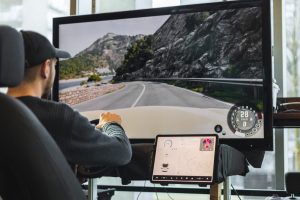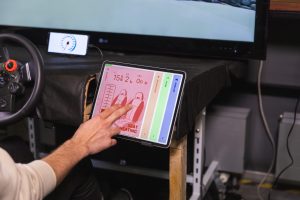A Research Through Design approach to automotive HCI design


In recent years, changes in the car industry have brought about increased driver- distraction, which is the leading cause of fatal automotive accidents. A major cause of this can be attributed to the introduction of touchscreen in-vehicle information systems (IVIS), which allows drivers to perform complex Secondary Tasks in relation to the Primary Task of driving. Meanwhile, little consideration is given to the influence that such an industry transition in design might impose on the human driving the car. This calls for new approaches to working with the design of IVIS, which challenge the current status quo of design practice in the industry.
This thesis seeks to explore new ways of approaching and experimenting with the design of IVIS systems. By applying an explorative human-centric approach, we experimented with the creation of several IVIS prototypes through multiple iterations to explore different interaction and feedback modalities with emphasis on their impact on User Experience and driver-distraction. Due to ethical considerations, we test these prototypes in a medium fidelity simulated environment with real users. Our findings indicated that a human-centric approach in a predominantly HMI-driven field can contribute new and interesting insights to the field of IVIS design. More specifically, these insights revealed that our implementation of sub-global multi- finger touch gestures resulted in high perceived Pragmatic and Hedonic quality, while reducing drivers need for Visual Attention and Mental Load, when operating our IVIS prototypes. As such, our thesis concludes that sub-global multi-finger touch gestures appears to be a promising avenue for improving the current state of IVIS, but further research is needed if the concept is to develop further.



